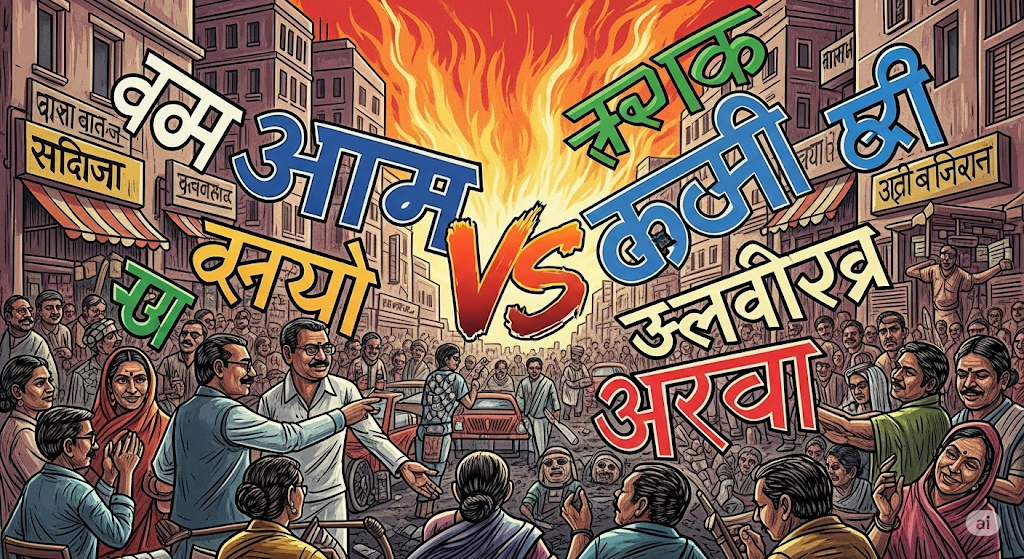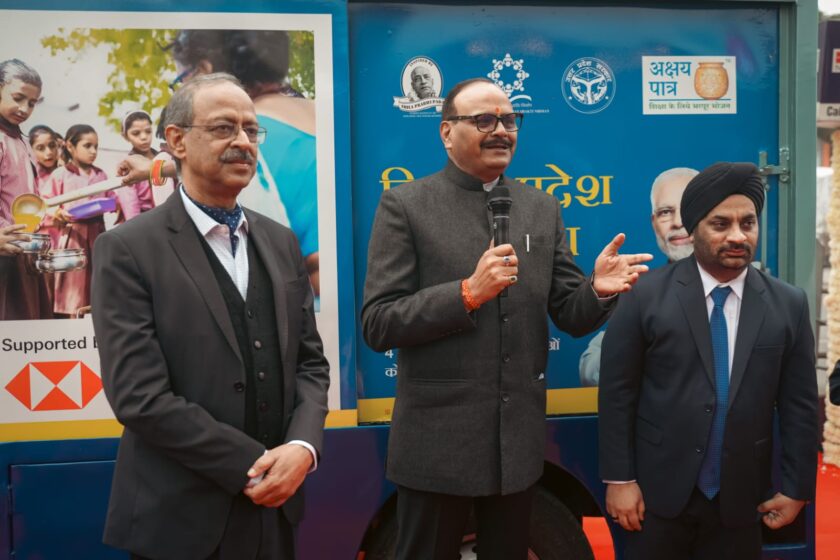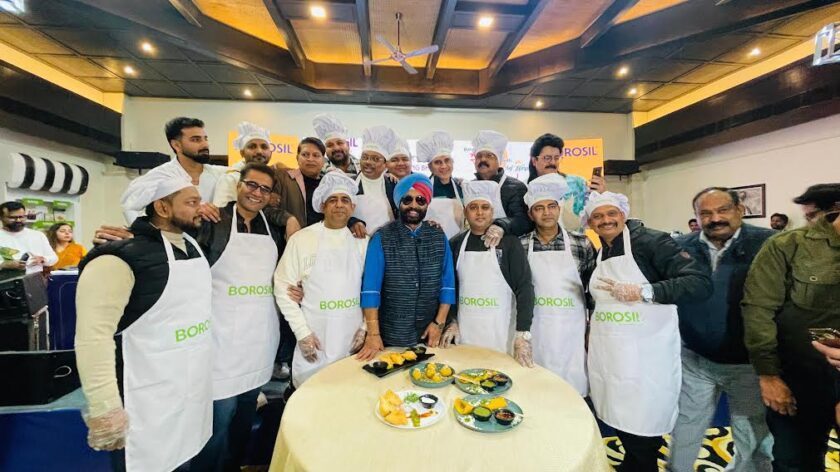Lucknow: India’s intricate linguistic mosaic is once again under political strain. The decades-old debate over the role and reach of Hindi has erupted anew, catalyzed by the central government’s renewed push to project it as a “unifying national language.” But this familiar battle has now entered a more volatile phase—where social media wars, policy clashes, and regional pride have converged into a full-blown national flashpoint.
From Maharashtra’s Marathi bastions to Tamil Nadu’s Dravidian strongholds and the linguistically sensitive states of the Northeast, the country is witnessing an upsurge of protests, polarized political statements, and uneasy street-level tensions. At the heart of it is a resurgent push for Hindi, spearheaded by senior leaders of the ruling Bharatiya Janata Party (BJP), and the blowback it’s receiving across India’s federal tapestry.
The Spark: Amit Shah’s Provocative Call and a Renewed Agenda
The immediate trigger for the controversy came in late June when Union Home Minister Amit Shah, speaking at a book launch in Delhi, claimed that English-speaking Indians would “soon feel ashamed” and urged citizens to embrace their mother tongues, especially Hindi. The remarks were not new in tone—Shah has repeatedly advocated for Hindi’s wider use—but this time, the rhetoric was more pointed and symbolic. He hailed Hindi as a symbol of national unity and India’s cultural supremacy on the global stage.
In tandem, the Centre issued fresh directives encouraging Hindi in court proceedings, public administration, and official recruitment—especially in Hindi-speaking states. Though pitched as an inclusive drive to promote Indian languages, critics argue that the subtext and implementation betray an intent to impose Hindi at the expense of linguistic diversity.
The timing was politically delicate. Maharashtra was already grappling with backlash over an April 2025 education policy mandating Hindi alongside Marathi and English in primary schools. The policy was swiftly retracted by Chief Minister Devendra Fadnavis on June 29 following public outrage and opposition criticism. A review committee, headed by renowned educationist Dr. Narendra Jadhav, was announced, but the unrest had already snowballed into a broader ideological protest.
South India Pushes Back: Tamil Nadu Leads the Charge
Nowhere is the resistance more entrenched than in the South. In Tamil Nadu, the battle over Hindi goes beyond policy—it’s an issue of identity. Chief Minister M.K. Stalin of the DMK has fiercely opposed the National Education Policy (NEP) 2020’s three-language formula (regional language, Hindi, and English), accusing the Centre of a “Hindi imperialist agenda.”
Stalin reiterated Tamil Nadu’s two-language stance (Tamil and English) and has refused to implement the NEP’s language mandates. In retaliation, Union Education Minister Dharmendra Pradhan reportedly threatened to cut central education funding, withholding ₹21.5 billion (approx. $246.7 million), drawing sharp condemnation and reigniting memories of the 1965 anti-Hindi agitations—when Tamil Nadu erupted in mass protests, some violent.
Protestors waving black flags and chanting “Down with Hindi imposition” have flooded Chennai’s streets in recent weeks, with social media further amplifying the outrage. The hashtag #HindiImposition has trended for days, illustrating how language remains a potent political and cultural fault line in India.
Maharashtra: Unity in Dissent
In Maharashtra, the BJP’s attempts to widen Hindi’s reach have triggered unintended political realignments. Former rivals Uddhav Thackeray (Shiv Sena-UBT) and Raj Thackeray (MNS), who once diverged on ideology and strategy, have momentarily united in opposing what they term “Hindi compulsion.”
Uddhav, addressing a charged rally in Mumbai, emphasized that “Marathi is our pride, not a hurdle,” while Raj Thackeray’s party, which has often been accused of linguistic vigilantism, has been linked to violent incidents targeting non-Marathi speakers in Thane and Mumbai. An April case where two women were harassed for not speaking Marathi reignited tensions, even as the state police launched an investigation into regional hate crimes.
Maharashtra’s case is emblematic of how language debates can evolve into complex regional-national confrontations—where local pride, electoral math, and identity politics collide.
The Northeast and Bengal: Fragile Linguistic Faultlines
The situation is equally delicate in the Northeast, where over 200 tribal and indigenous languages are spoken. Here, language is a marker of ethnicity, autonomy, and political history. Several community leaders have alleged growing pressure on students and citizens to learn Hindi as a prerequisite for federal benefits, or worse, as a test of “national loyalty.”
On July 19, West Bengal Chief Minister Mamata Banerjee accused the Assam BJP government of “threatening and sidelining” citizens who resisted Hindi’s primacy. “Respect for all languages is non-negotiable,” she said at a rally in Siliguri, subtly positioning her Trinamool Congress as the defender of linguistic pluralism.

This friction is particularly acute in Assam, Manipur, and Nagaland, where fears of cultural homogenization run deep. For many, the current push for Hindi evokes anxiety about being culturally erased in the broader national narrative.
AI, Technology, and the Digital Disparity
Beyond the street protests and legislative standoffs, there’s a quieter but equally critical front where the language war is being waged—technology. As artificial intelligence (AI) rapidly penetrates everyday life, languages that lack digital infrastructure risk extinction.
According to a 2024 India Today report, over 220 Indian languages are at risk of vanishing, especially those with minimal online representation or technological integration. A senior AI researcher at IIT Madras noted, “We are building AI models for English and Hindi, but leaving out Santali, Bodo, Konkani, and Tulu. This is digital discrimination.”
States like Kerala have started their own initiatives to digitize Malayalam, while Karnataka has funded Kannada-based NLP (Natural Language Processing) tools. However, in the absence of strong central support, many languages could disappear from India’s digital future—ironically undermining the Centre’s stated goal of “language promotion.”
The English Question: Elitist or Essential?
At the heart of this debate lies another unresolved issue—India’s relationship with English. Though derided by some as a colonial relic, English is the language of the judiciary, corporate India, science, and diplomacy. In cosmopolitan tech hubs like Bangalore and Hyderabad, English remains the only common linguistic denominator among multilingual professionals.
Still, leaders like Amit Shah have critiqued the dominance of English, portraying it as an elitist barrier that “alienates the masses.” Supporters argue that empowering Indian languages doesn’t require the abandonment of English, but a more balanced, bilingual strategy.
As columnist Harish Khare recently wrote in The Hindu, “This is not a zero-sum game. English is a bridge, not a threat. Hindi is a connector, not a conqueror. We must resist turning language into a weapon of control.”
Political Chess: Election Season Maneuvers
The backdrop to all of this, of course, is political. With assembly elections in Tamil Nadu and West Bengal due in 2026, language has become a convenient wedge issue. For the BJP, it is a way to galvanize Hindi-speaking voters across northern India, portraying the party as the protector of “Bhartiya Sanskriti.” For the DMK and TMC, it’s a rallying point to reaffirm regional autonomy and counter centralization.
In Andhra Pradesh, where the reaction has been more muted, Deputy CM Pawan Kalyan and Minister Nara Lokesh have both endorsed learning Hindi. Lokesh, in a recent India Today interview, remarked, “Why shouldn’t we learn Hindi if it helps communication?” The comment sparked both praise and backlash, revealing the complex politics even within states not traditionally opposed to Hindi.
A Way Forward: Pluralism Over Polarization
India’s language policy needs a reset—one that prioritizes inclusion, not dominance. The 1967 amendment to the Official Languages Act, which allowed English to remain in use alongside Hindi “as long as required,” offers a precedent for linguistic coexistence. Future reforms could include:
- Greater investment in regional language digitization
- Enhanced funding for bilingual education in all states
- National AI models trained in a broader set of Indian languages
- Policy space for states to determine language instruction freely
Unless India can reconcile its linguistic diversity with its political aspirations, the current friction may deepen. A nation of 1.4 billion cannot afford to fracture over the tongues it speaks. Instead, it must embrace its multiplicity—turning language from a faultline into a foundation.
As the protests continue and rhetoric escalates, the core question remains: Can India treat its linguistic diversity as an asset in the 21st century, or will it allow it to become a battlefield for political posturing? In the coming months, as schools reopen and parliaments reconvene, the answers—or the next sparks—will emerge.





